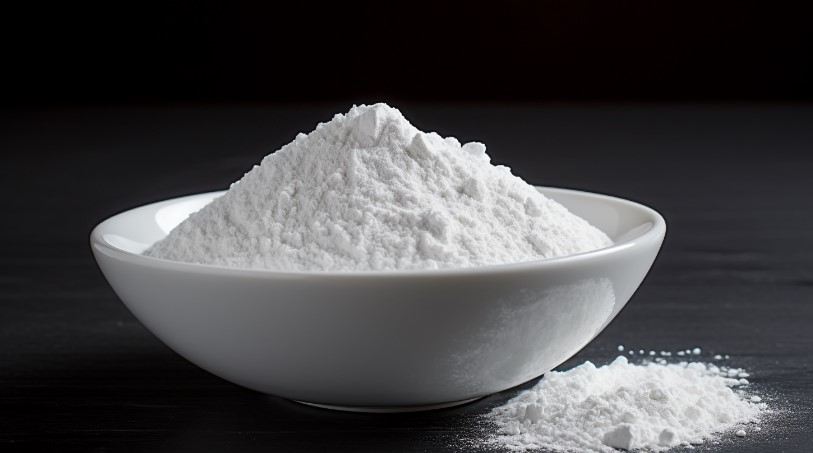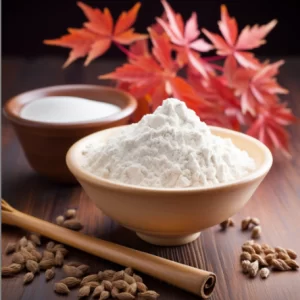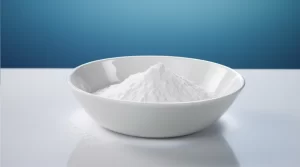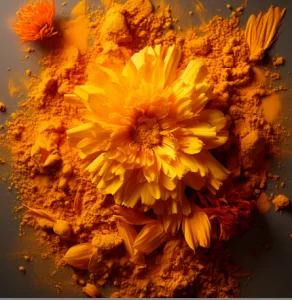Artefacto blanqueador-ácido kójico

Ácido kójico, also known as kojic acid, its chemical name is 5-hydroxy-2-hydroxymethyl-4H-pyran-4-one, chemistry The structural formula is as shown below.
Kojic acid is a colorless prismatic crystal that can inhibit tyrosinase activity during the production of melanin and has a significant whitening effect without inhibiting other enzymes. It is now used in daily products such as whitening, sunscreen cosmetics, solvents, and toothpastes. Widely used in chemical industry.
Characteristics of ácido kójico
The application and discovery of kojic acid originated from ancient Japanese folk medicine. In Japan, it was observed before 1300 that women working in sake breweries had lighter skinned hands. In 1953, researchers isolated and identified its chemical structure in glucose fermentation broth. In 1988, cosmetics containing kojic acid were launched in Japan, which were applied for by Sansho Pharmaceutical. By 1990, cosmetics containing kojic acid were launched.
The structures of kojic acid and glucose molecules are similar. Researchers used isotope tracking technology to prove that kojic acid is formed by direct oxidation and dehydration of glucose without breaking the carbon skeleton. It is weakly acidic, and its acidity comes from its phenolic hydroxyl structure. Kojic acid is a white crystalline powder, easily soluble in water and ethanol, insoluble in grease, sensitive to light and heat, and easily oxidized in the air; kojic acid can chelate with many metal ions and chelate with Fe to produce a yellow complex .
The efficacy of kojic acid
Blanqueamiento
En la piel humana, la tirosina sufre una compleja oxidación y polimerización con radicales libres de oxígeno bajo la catálisis de la tirosinasa, y finalmente sintetiza melanina. El ácido kójico tiene la función de inhibir la actividad de la enzima tirosinasa generadora de melanina, y tiene un importante efecto blanqueador sin inhibir otras enzimas. Tiene buenos efectos blanqueadores y de eliminación de pecas. Es una materia prima cosmética de uso común y se utiliza ampliamente en lociones. Por ejemplo, máscara facial, loción, crema para la piel, etc.
Ati-oxidation
Además de su efecto blanqueador, el ácido kójico también tiene efectos eliminadores de radicales libres y antioxidantes. Puede ayudar a tensar la piel, promover la agregación de proteínas y ayudar a tensar la piel.
other
Kojic acid has properties such as antibacterial ability, antioxidant properties, and chelation with metal ions. Kojic acid and its derivatives have been widely used in foreign countries for antibacterial and antiseptic purposes in foods, including fruits and vegetables, fresh cut flowers, mushrooms, meat products, and aquatic products. Oxidation color protection. Kojic acid is also an intermediate in the production of cephalosporin antibiotics, a raw material for the production of pesticides and insecticides that are non-toxic to humans and animals, and is used as an iron analysis reagent, a film spot remover, etc.
The whitening mechanism of ácido kójico
The mechanism of action of kojic acid is mainly to inhibit the activity of tyrosinase by chelating with the copper prosthetic group on tyrosinase. Kojic acid can also block intermediate products in melanin production and inhibit tyrosinase-related protein-2 (TRP-2), achieving the whitening effect of inhibiting melanin production and diluting dark spots.
Early analysis believed that kojic acid combines with Cu2* on the active site of tyrosinase through the 5-position hydroxyl group and 4-position carbonyl group to form an integrant, thereby inhibiting the activity of tyrosinase and reducing important intermediate products (dopa, polypeptide, etc.). (Baxin) production, preventing the synthesis of melanin. Later experiments showed that kojic acid had a significant inhibitory effect on both the monophenolase and diphenolase activities of tyrosinase.
Preparation of kojic acid
Kojic acid is a secondary metabolite derived from microorganisms. It has no physiological toxicity and has a simple structure. However, due to the certain instability of its enol structure, it is often used as a skeleton for modification and derivatization, such as the synthesis of kojic acid dipalmitate, Kojic acid ester, etc., these derivatives not only improve the solubility and stability of kojic acid in oily cosmetics, but also greatly increase the biological activity.
Kojic acid was first discovered from soy sauce brewed by Aspergillus oryzae. Later, many researchers also isolated kojic acid from the fermentation products of certain strains of Aspergillus flavus, and the yield was higher than that of Aspergillus oryzae. However, when Aspergillus flavus ferments to produce kojic acid, it also produces aflatoxin, a strong carcinogen. When some scholars studied 149 strains of Aspergillus oryzae and 46 strains of Aspergillus flavus, they found that all of Aspergillus flavus produced kojic acid and 34 strains also produced aflatoxin; while only 105 strains of Aspergillus oryzae produced kojic acid and none of them produced aflatoxin. Therefore, safety issues need to be paid attention to when selecting Aspergillus flavus as the kojic acid-producing strain.
In order to increase the production of kojic acid, domestic and foreign scholars have conducted a lot of research work, mainly including strain breeding and fermentation method optimization. As kojic acid-producing bacteria, Aspergillus strains are mutated by different physical and chemical methods, and the kojic acid production is increased to varying degrees. However, with the continuous deepening of mutagenesis research, the effect of increasing yield through mutagenesis has been significantly reduced. This is because in the process of strain selection, there are limitations such as random mutagenesis methods, difficulty in mastering the direction, and difficulty in screening ideal individuals. In addition, multiple rounds of screening result in reduced sensitivity and increased tolerance of strains. Therefore, it is necessary to find another way to increase the production of kojic acid.
Current status of international cosmetic regulations and management of kojic acid
There are currently no provisions regarding kojic acid in the EU Cosmetics Regulation (EC) No 1223/2009. Regarding the safety of kojic acid, SCCS pointed out in SCCS/1481/2012 that kojic acid with a mass fraction of 1.0% is often applied to the face. It is safe (does not involve kojic acid derivatives) and is used in leave-on creams on hands (not used on large areas). Japan reopened regulations on the addition of kojic acid in cosmetics in 2005. Although there is no clear limit for use, the recommended dosage is between 0.1% and 1% by mass. According to information provided to the FDA by the U.S. Industry Voluntary Cosmetic Registration Program (VCRP), kojic acid is used in 16 products such as bath products and skin care products. In the current use concentration survey conducted by the Personal Care Products Council, the use concentration range of kojic acid The mass fraction is 0.1% to 2%, and the maximum concentration is used in face and neck creams, lotions and powders. The U.S. Cosmetic Ingredient Evaluation Committee (CIR)’s evaluation conclusion on kojic acid: Under certain conditions of use, the maximum allowable concentration of kojic acid (mass fraction 1.0%) is safe.



